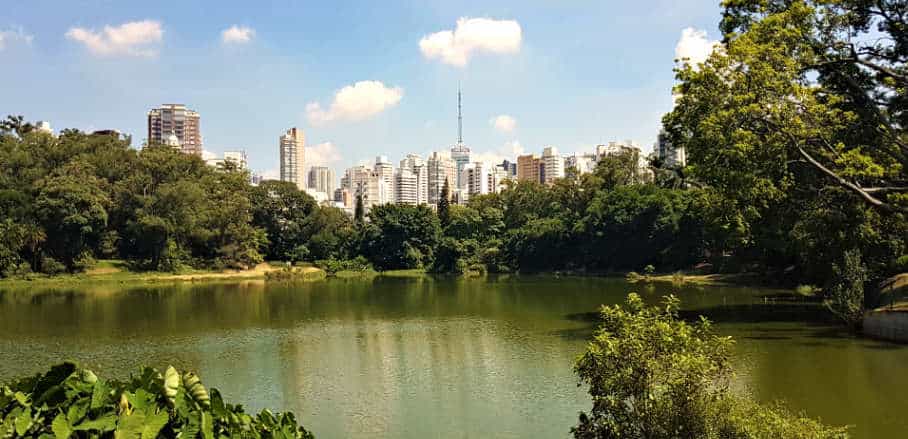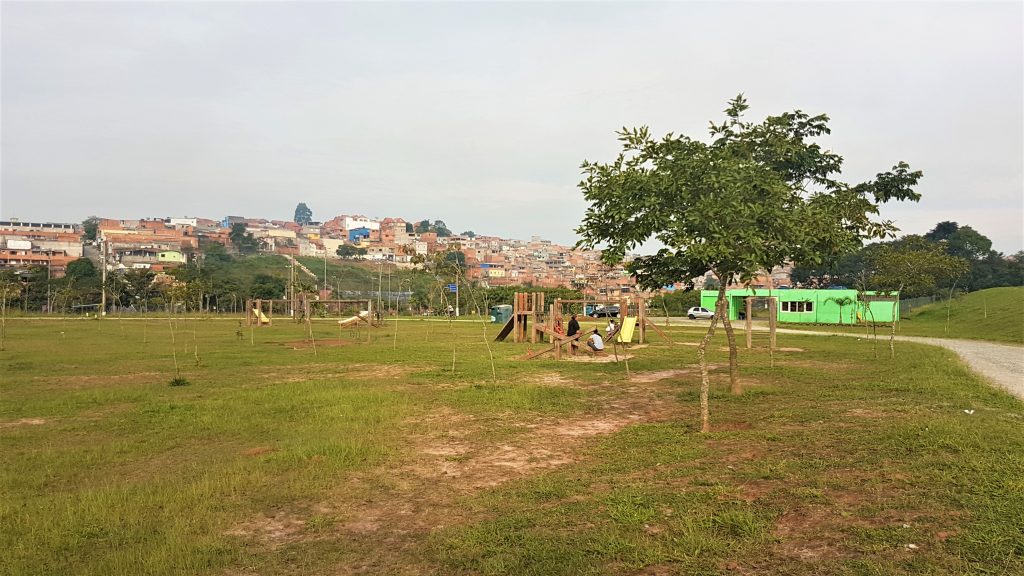“One Healthy” Parks: Where People and Biodiversity Thrive
The link between better mental health and urban green spaces is undeniable – and people want to enjoy them more. Jéssica Felappi makes a point to use this momentum to invest in quality urban green spaces that benefit people, animals and the environment.
Before the onset of the COVID-19 pandemic, one in eight people suffered from a mental health condition. The additional stressors of the pandemic worsened this picture with an estimated increase of more than 25 per cent in anxiety and depression cases just in the first year. Mental health is associated with multiple and interacting urban factors and therefore needs to be addressed in its complexity.
One Health Lens
The COVID-19 pandemic has brought One Health into the spotlight as a pressing way forward to prevent and cope with future pandemics. One Health is a holistic approach that recognizes the interconnection between the health of humans, animals, and the environment. It advocates for the integration of multiple disciplines and multisector collaborations to achieve sustainable solutions for health issues.
In practice, however, the application of One Health has mainly involved the medical and veterinary spheres under the topics of zoonotic diseases and antimicrobial resistance, with criticism regarding the relatively low importance given to the environmental dimension. Influenced mainly by the pandemic, the One Health concept has been advanced with a call for an urban One Health – “One Healthy Cities” – and an updated definition alongside fundamental principles that explicitly acknowledge, among other things, the equity between disciplines and the importance of biodiversity.
In the scope of my PhD project, I proposed a positive-oriented One Health approach to address urban mental health and wellbeing, using the megacity of São Paulo, Brazil as a case study. Under this lens, relationships between mental health promotion, urban wildlife and environmental health – in terms of the quality of green spaces – are investigated and recommendations are developed to benefit both people and biodiversity.
Urban Environments that Promote Health and Biodiversity
There is solid scientific knowledge on the association of Urban Green Spaces and street trees with improvements in anxiety, depression, and mood disorders, as well as psychological restoration and better well-being. Doctors in some countries have started to prescribe visits to nature – the so-called “green prescriptions” – to complement medical treatments, though this has already been an ancient practice in some Eastern societies. More recent studies have also investigated the effect of the biodiversity of plants and animals on psychological outcomes and well-being. Evidence on this relationship is still building up as some results pointed to a beneficial effect of plant and animal species richness and bird songs on health and well-being outcomes whereas others did not find relevant associations.
It seems the pandemic has changed people’s values and inclinations towards outdoor activities and contact with nature. A survey conducted in 2021 with a sample of Brazilian capitals found that 48 per cent of respondents wanted to visit urban parks more frequently than they did before the pandemic. The combination of benefits provided by green spaces with the heightened motivation to visit them by the population results in a great health promotion opportunity for cities such as São Paulo, the core of the fourth largest urban agglomeration (22 million inhabitants), which – before the pandemic – had one of the highest prevalence of mental disorders in the world (29,6 per cent).
One big challenge in São Paulo – as in many cities in the world – is to provide equal access to green spaces throughout the heavily densified city so that all residents have the possibility to benefit from them. Whereas usual approaches focus only on green space quantity and distribution, the One Health lens made us look at the quality of these spaces: Do all green spaces provide the same benefits for mental health (and for biodiversity)? Which characteristics are linked to better outcomes?
Interviews with park users showed that setting characteristics such as the presence of water, trees, grass areas, and ample space are linked to feelings of relaxation. Moreover, the possibility of encounters with animals was mentioned as an additional factor boosting park users’ experience:
“ […] this contact with animals, nature, forest… even today I was looking at spiders, spider webs… all of this distract, I think it makes good to you if you come with this intention of enjoying, finding peace of mind… so this makes me feel good.”
However, aspects of green space quality were also found to hinder users’ experience and benefits:
“[…] you sit on the bench because there is no condition… when you come to the park you want to feel the grass, want to feel your feet in the sand… today there is no minimum condition of doing that… the grass is overgrowth, you can even sit on broken glass or something like that.”
São Paulo´s socio-economic inequality can be clearly seen with a ride from the centre towards the peripheral areas. Accordingly, this is reflected through a wide spectrum of green space quality across the city regions, including drastic differences from vegetation to maintenance aspects. This means that we cannot take it for granted that a green space will provide all expected benefits, depending on their quality some parks may offer less potential for mental well-being benefits than others.
- Examples of different park quality in São Paulo ©Jéssica Felappi
Our ongoing analysis will indicate how specific park characteristics influence visitors’ psychological restoration and wildlife support as well as the interaction between both. This evidence will contribute recommendations for the improvement of urban parks that maximise benefits for all. But for now, I share two main points that I take from this experience:
Cities should take the opportunity of higher motivation to park visitation after COVID restrictions, to create or strengthen their urban green spaces plan, by ensuring adequate access to all citizens and investing in quality spaces that are attractive and optimise benefits to health and biodiversity conservation.
Secondly, interdisciplinary studies are challenging in terms of complexity and knowledge exchange, but looking at as many dimensions as possible allows us to tackle more issues in a single solution, which is what cities with multiple challenges and limited resources need the most.
- “One Healthy” Parks: Where People and Biodiversity Thrive - 20. September 2022


